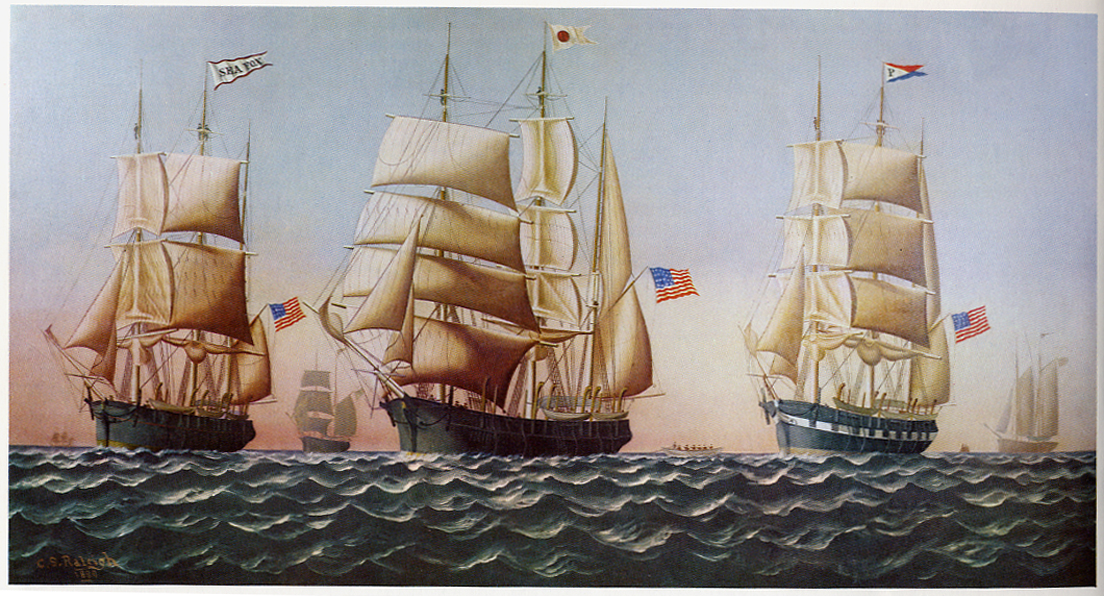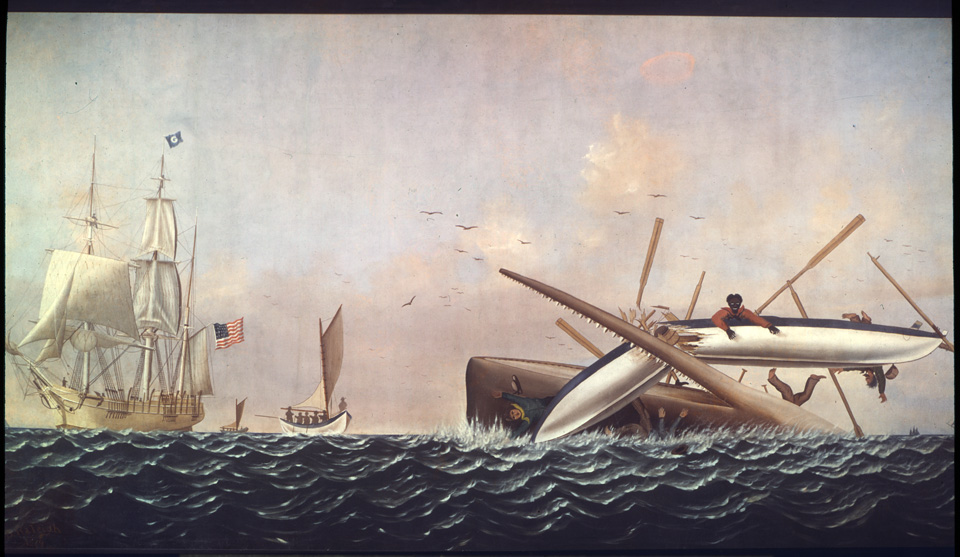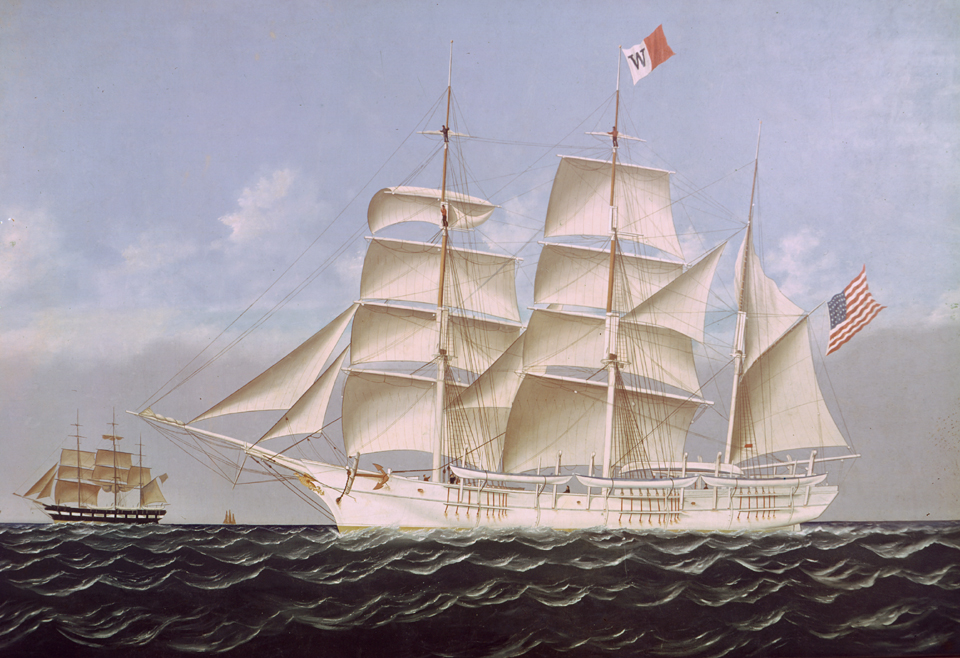UNVARNISHED: Conservation of Charles Sidney Raleigh’s Panorama of a Whaling Voyage
Wattles Family Gallery
Opened: December 12, 2021
Closed: March 6, 2022
IMAGE CAPTION: (above) Charles Sidney Raleigh (1830-1925), The Gam: Barks ‘Sea Fox,’ ‘James Allen,’ and ‘Commodore Morris,’ 1878-1880. Oil on canvas, c. 79 x 141 inches, New Bedford Whaling Museum.
Between 1878 and 1880, the prolific British-born artist Charles Sidney Raleigh undertook a daring artistic venture: a monumental panorama of twenty-two whaling scenes from the four-year voyage of the Niger.
Panorama paintings were popular entertainments exhibited to working and middle class audiences for a small ticket fee, and rose to prominence in the United States starting in the 1840s. Often accompanied by dramatic music, stage dressing, and narration, static and moving panoramas engaged audiences’ imaginations and offered an exciting and sometimes lurid experience in the days before cinema.
Raleigh’s Panorama of a Whaling Voyage follows the Niger, which departed from New Bedford in 1870 for the Pacific. It sought whales in the waters near Tristan da Cunha before entering the Indian Ocean, skirting the south coast of Australia and spending seven months in New Zealand, visiting the Bay of Islands and Auckland, before stopping at Norfolk Island and Savage Island.
Raleigh was well-versed in maritime ways. He ran away to sea at the age of ten, signed up with the Merchant Marines, and in 1870, after thirty years voyaging the ocean, settled in New Bedford, married, and set up shop as a “fancy painter” of houses, signs, and carriages. He was highly prolific during his career, creating over 1100 paintings – 600 of whaling vessels. The artist died in Bourne, MA in 1925 – leaving behind a trove of artworks, many of which now reside in the NBWM collection.
The New Bedford Whaling Museum owns 18 of the Raleigh panorama scenes, each measuring over six feet tall and 12 feet wide. Unvarnished features eight of the paintings. Four additional panels are currently on display in other galleries within the Whaling Museum. They engagingly depict scenes of whaling in vivid color, with detail and liveliness. However, they require substantial conservation work.
Conservation
After being publicly exhibited until at least 1905, the panorama was donated to the NBWM in 1918. Conservation measures taken in the 1960s included mounting them on heavy aluminum panels, making the paintings difficult to move, store, and display. Moreover, the practices of art conservation have changed dramatically since the 1960s and the choices made at the time are no longer standard practice.
Unvarnished aims to underscore the challenges museums face in dealing with large collections and unusual objects. A second goal is to raise sufficient funds for the conservation of these paintings, which are in very poor condition, and preserve them for generations to come.
Support Conservation of the Raleigh Panorama
Your support of the Raleigh Panorama conservation initiative helps the Museum provide urgent care for a group of significant paintings that are highlights of the collection, integral to the museum’s mission, and highly relevant to our community’s history.




